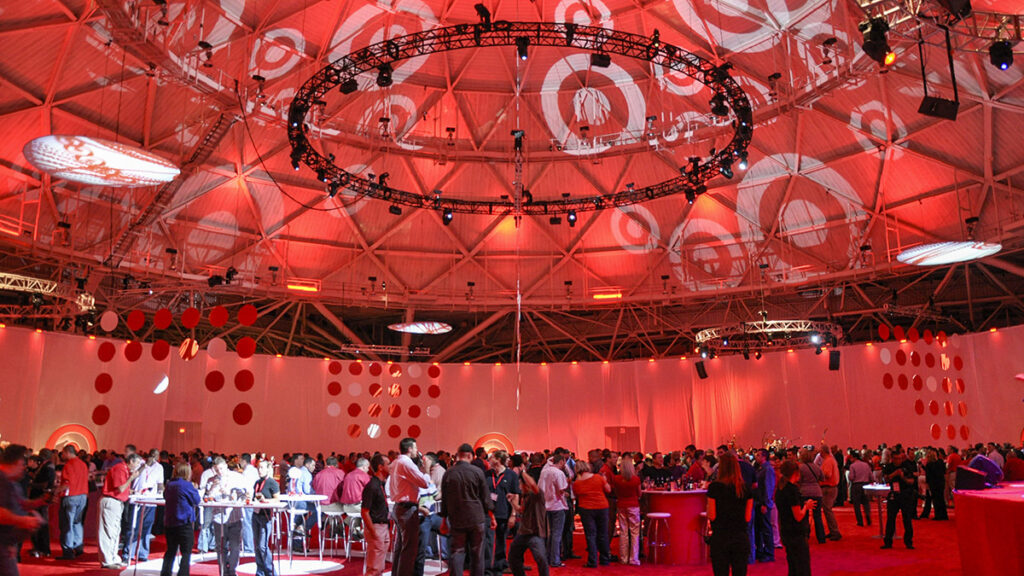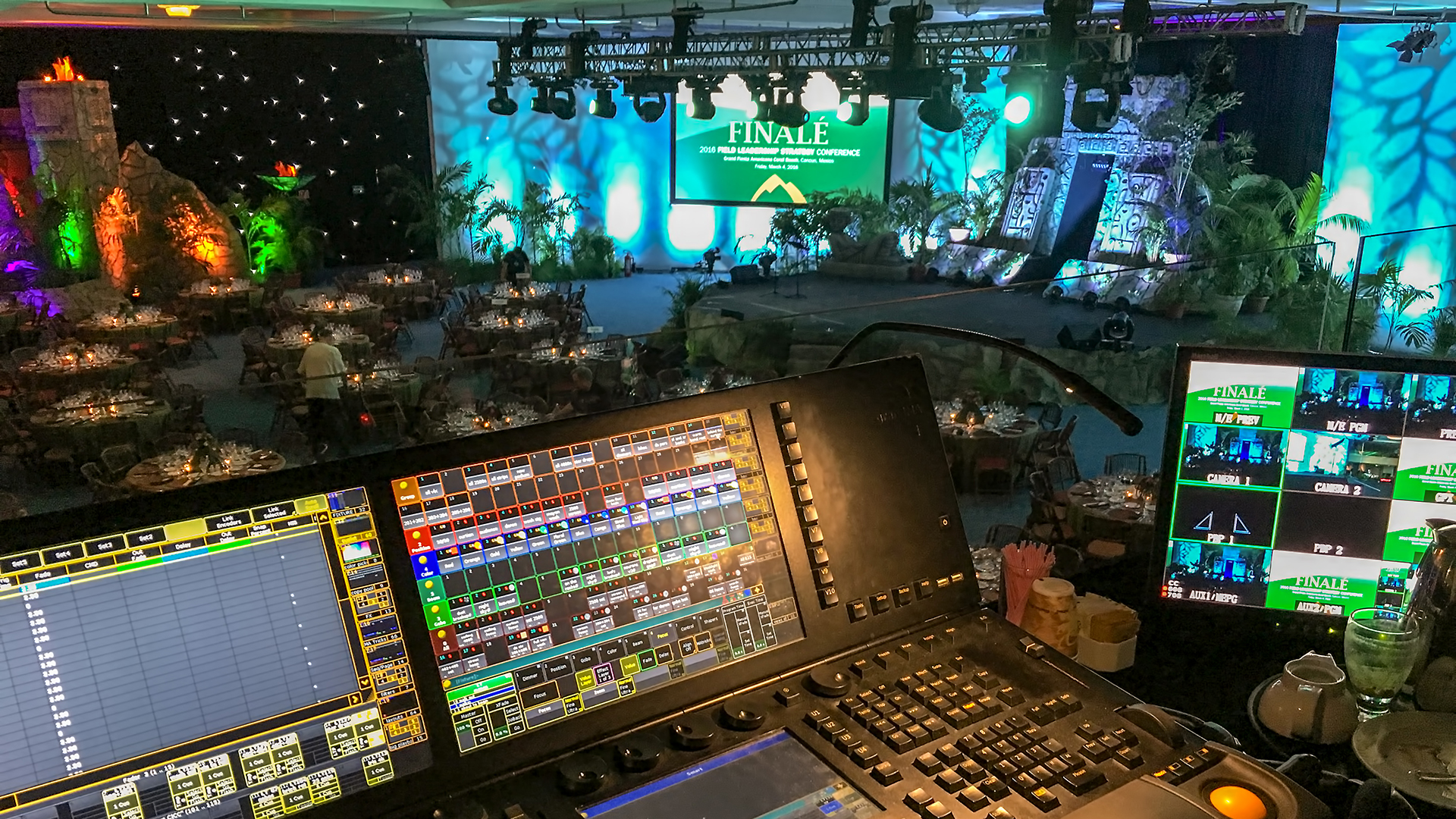June 6, 2022
Heroic’s Guide to Corporate Event Strategies for 2023 and Beyond
If you’ve ever driven with kids in the car, you’re familiar with the question: “Are we there yet?” That’s what it has felt like the last two years for anyone who plans corporate events or develops the corporate event strategy.
With joy in our hearts, we can finally proclaim: Yes! We’re there!
Now it’s time for a new set of questions. Like, how have corporate events changed? What are the latest corporate event trends? And, what’s the best way to get started planning?
We’re here to address these questions and more, including:
- How to reignite your corporate event strategy
- What’s trending in corporate events
- How to create memorable brand experiences
- How to start planning your next corporate event
- How to measure your event success

How to reignite your corporate event strategy
Prior to the pandemic, in-person events were the gold standard for brands. It’s almost as if the event wasn’t live, in-person, it didn’t happen at all. As a result, virtual events, which existed long before the pandemic, often took a backseat to in-person events.
That sentiment is shifting big time.
Virtual events have hit their stride. In fact, we believe in-person events that include a virtual offering play an integral role in any corporate event, especially when you need to:
- Reach a bigger audience
- Accommodate folks who are unable to attend in-person
- Manage your travel budget
What’s trending in corporate events? (How to give it that wow-factor)
Every day, we talk to brand and marketing leaders about their event goals and objectives and two things keep bubbling to the top of those conversations.
People want connection
Whether it comes in the form of networking with new people or reconnecting in person with longtime colleagues, the trend is all about establishing and strengthening relationships.
This is especially true for companies that went from 100 percent in-office to 100 percent remote in a very short period of time. When planning your corporate event, be strategic with your agenda structure and create space and creative tactics to encourage connection, teamwork and celebration.
People want to have fun
After two years of staring at laptop screens, people are ready for something different – they’re ready to meet in-person. We’re seeing more interest in laughter, inspiration, balance, real-talk and fun.
Frankly, we’ve never been happier to have speakers and entertainment as part of our core offerings.
Bringing in outside speakers and talent that are aligned with your event goals create that momentous experience for your audience. While the phrase “surprise and delight” may seem overused, this is definitely the time for it.
How to create memorable brand experiences (on stage, on-screen, or both)
Lasting impressions rarely happen by accident. They take vision, creativity and lots of planning. Showing up strong at your next event starts with nailing your goals and objectives. This is the springboard for your ever-so-important event strategy.
What’s the format?
Shakespeare couldn’t have predicted just how true his “all the world’s a stage” line would be in today’s world. The stage can be physical, like at an in-person corporate event. Or the stage can be “on-screen,” like during a virtual event.
What options does the format offer for branding?
In-person events offer more familiar opportunities for communicating your brand in the overall event design – think scenic elements, graphic design, signage, collateral and swag. All of these remain important and should be part of your overall event strategy as they impact the experience you are creating for your audience.
Virtual corporate events have plenty of branding opportunities, too.
When we produce events for the small screen, we use what’s called a virtual platform to deliver the event. This virtual event technology is an intricate component of your event strategy. It not only sets your event apart from everyday Zoom or Teams calls, it supports the content and experience you are creating and managing.
Virtual events offer many opportunities to let your brand shine. From your pre-communications strategy to registration, to the login screen and pre-show lobby, to your mainstage, breakout rooms and so on – integrating your brand into the design of all touch points is critical.
Your audience should know immediately that they are at your event, just as you do when you see an Apple launch or the NFL draft, as every detail supports the brand and the goals and objectives of the event.
A friendly word of caution
Maybe it was living through two years of Zoom calls from home, but we’ve noticed audiences have a low tolerance for technical mishaps, poor quality, awkward transitions and lackluster production. Be sure to invest the time and dollars to make your next event feel special (whether it’s in-person, virtual, or hybrid). Your audience has been waiting for it.

How to start planning your next event
We all appreciate the gift of time, and that’s certainly true in the events industry. Where possible, our clients bring us into the planning process early. We’ve earned a seat at the table by bringing an objective clarity to their event goals and by providing a seasoned, strategic approach to planning and execution.
It is beneficial to nail down essential considerations early, especially:
Event location
This is driven by many factors including the type of meeting (incentive will drive the location/type of hotel), demographics of your audience (east/west coast, etc), airport accessibility, union/non-union labor city, expo component, your budget, etc.
Venue selection
This is critical to your event flow so approach this with a concise list of “must haves,” including: quantity and size of breakout rooms, General Session square footage/shape/ceiling heights with no low-hanging chandeliers, your preferred seating layout, staging/scenic footprint, flow of meeting space, outside meeting space, reception areas, and now more important than ever – the hotel guidelines and budget add-ons.
Site visits
Involve your production partner as you consider a venue for your event and include them on your initial and follow-up site visits. Their view is a combination of technical and production savvy and a discriminating view on what is possible to execute at a specific venue. Your production partner sees different things during site visits that should be factored into the technical budget. They will inquire about rig points, power, load-in restrictions and can also provide specific requests before a contract is signed.
If event marketing is part of your strategy, you know the importance of making the event unforgettable. That’s where working with an outside partner can make all the difference in delivering a unique experience that drives your messaging and goals. They can:
- Help you articulate your goals and objectives
- Focus on understanding your target audience and what drives them
- Discuss problems your audience may have directly or indirectly related to the event subject matter
- Drive creative ideas and content that support your brand, messaging and engage your audience
- Ask hard questions like – what do you want your audience to feel, to do after attending your event
- Take broad ideas and funnel them down to what is impactful
- Work with you on timeline management

Timeline for planning a corporate event?
There’s no magic number or foolproof equation. It all depends on what you’re trying to achieve and the support and resources. For example:
- Do you need to bring people together quickly for an announcement? Or are you sharing a new strategic direction for the company?
- Is it a brand-new product launch? Or the next iteration of an existing product?
- Is it a one-time special recognition event? Or an important fundraiser?
- Is your approval process straightforward or multi-layered with many stakeholders?
- Is accessibility to leadership’s calendar accessible or impossible?
- Do you have a budget to support partnering with an agency to produce and execute your meeting or are you driving solo?
Measuring the success of your corporate event
No matter how meaningful an event is, it also needs to deliver measurable value to the business. Who doesn’t want to show ROI to their leadership? Which route you take to measure your results depends on the goals and the corporate event strategy you established. For example:
- Traditional measures – You can follow up with your audience using an email poll or survey.
- Technology – Virtual event platforms provide a wide variety of stats and data about your event – like how often people engage on the platform, which breakouts they attended, or which content they reacted to.
- Content-related goals – Let’s say you have an annual sales meeting. You could track customer engagement or retention after the event. If you introduce a new sales process, you can measure whether you have an uptick in sales after three or six months. If you host a state of the business update, you can follow it up with interviews.
It’s your move
We hope these corporate event tips and insights are helpful – especially as you’re thinking ahead to your next event. Let’s chat if you get stuck in the process. Our team would love to help you reignite your corporate event strategy.




